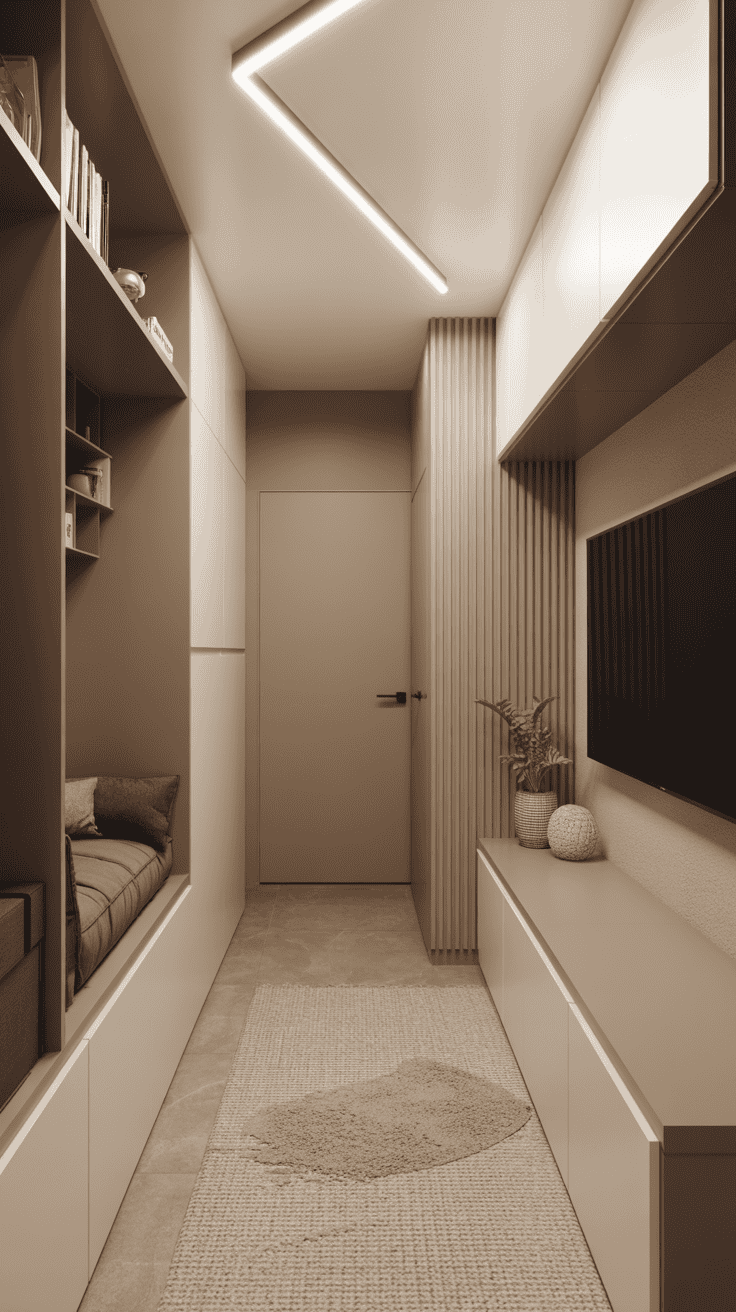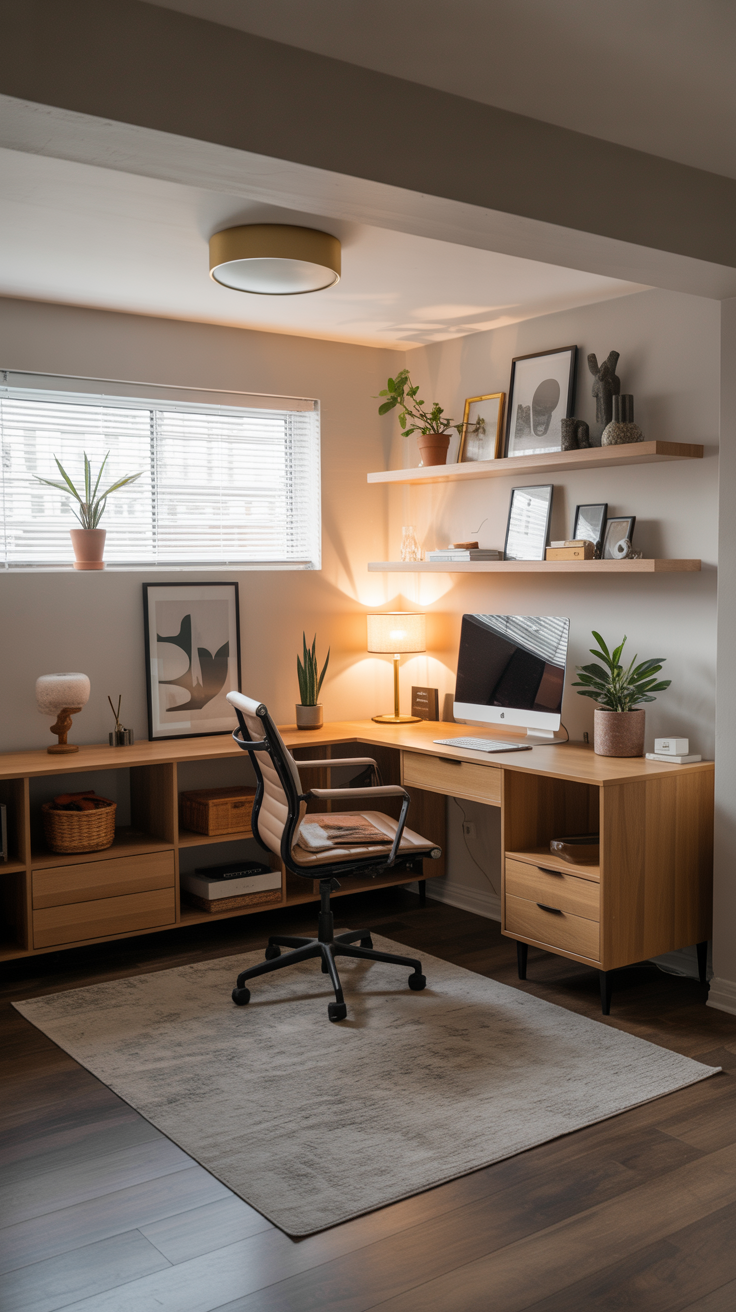This post shows 17 Basement Paint Ideas!
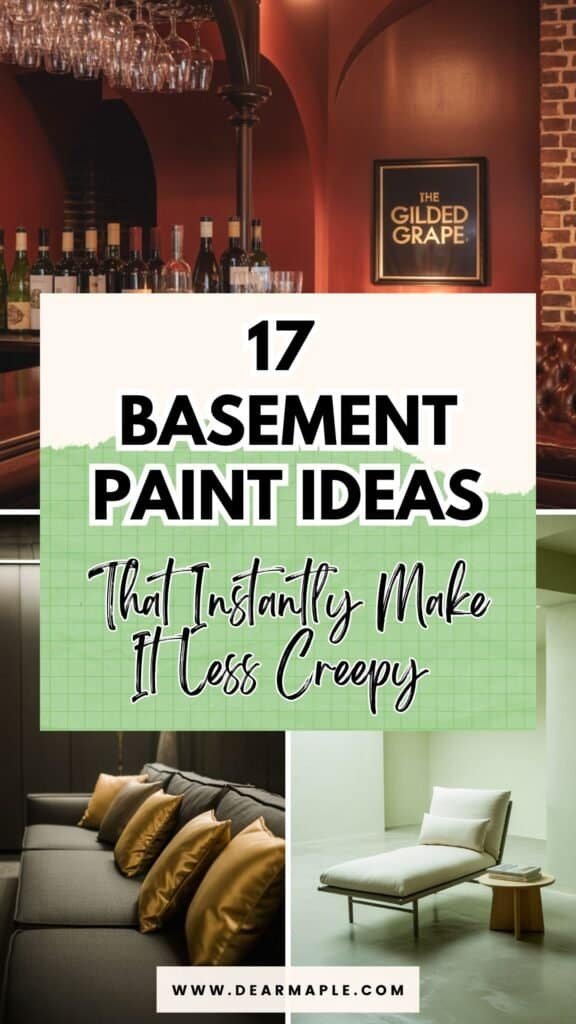
Look, I get it. Your basement probably looks like something straight out of a horror movie right now. You know the scene – those stark concrete walls, that weird musty smell, and lighting that makes everyone look like they’re about to star in a zombie flick. But here’s the thing: your basement doesn’t have to be the scary dungeon of your house anymore.
I’ve been there, staring at my own basement wondering how the heck I’m supposed to turn this underground cave into something remotely livable. The secret weapon? Paint. Yeah, I know it sounds too simple, but trust me on this one. The right paint color can literally transform your basement from “please don’t make me go down there” to “this is actually my favorite room in the house.”
Let’s face it – basements come with their own set of challenges. Low ceilings that make you feel claustrophobic, minimal natural light, and let’s not even talk about the moisture issues. But instead of throwing in the towel, I’m about to share 17 paint ideas that’ll make your basement so cozy, your family might actually fight over who gets to hang out down there.
Warm White with Subtle Undertones
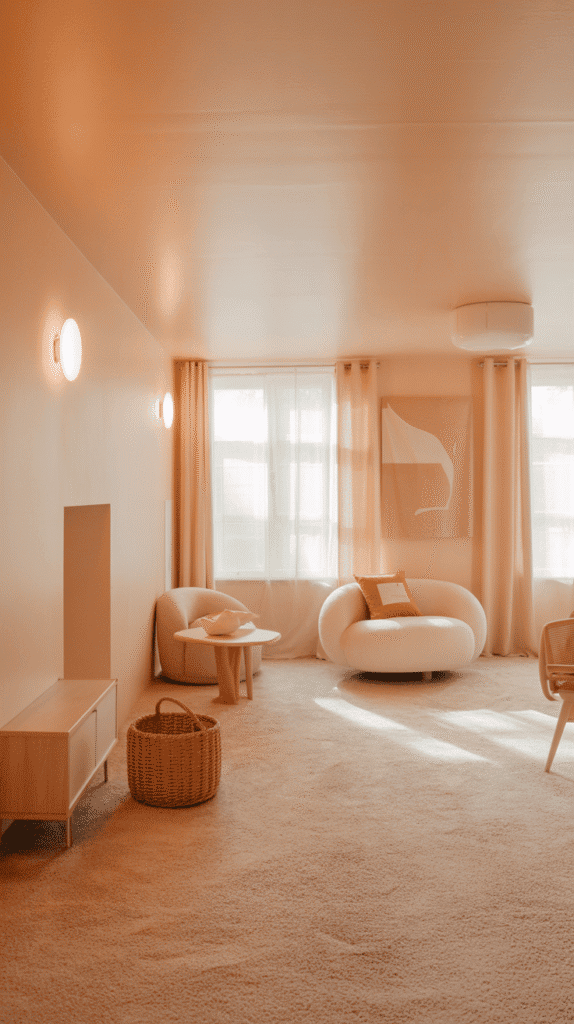
Here’s where most people mess up – they grab the first white paint they see and slap it on the walls. Big mistake. Cool whites in basements? They’ll make your space look like a psychiatric ward, and nobody wants that vibe.
I learned this the hard way when I painted my first basement with what I thought was “just white.” It ended up looking so sterile and cold that even I didn’t want to spend time down there. The game-changer was switching to warm whites with creamy or peachy undertones.
These warmer whites trick your eye into thinking there’s more natural light bouncing around. They create this soft, welcoming glow that makes the space feel inhabited rather than abandoned. Think “vanilla ice cream” rather than “hospital ceiling tile.”
Pro tip: Test your white paint in different areas of your basement. What looks warm upstairs might still look stark down below because of the different lighting conditions. I always tell people to live with a sample patch for at least a week before committing to the whole room.
Soft Sage Green
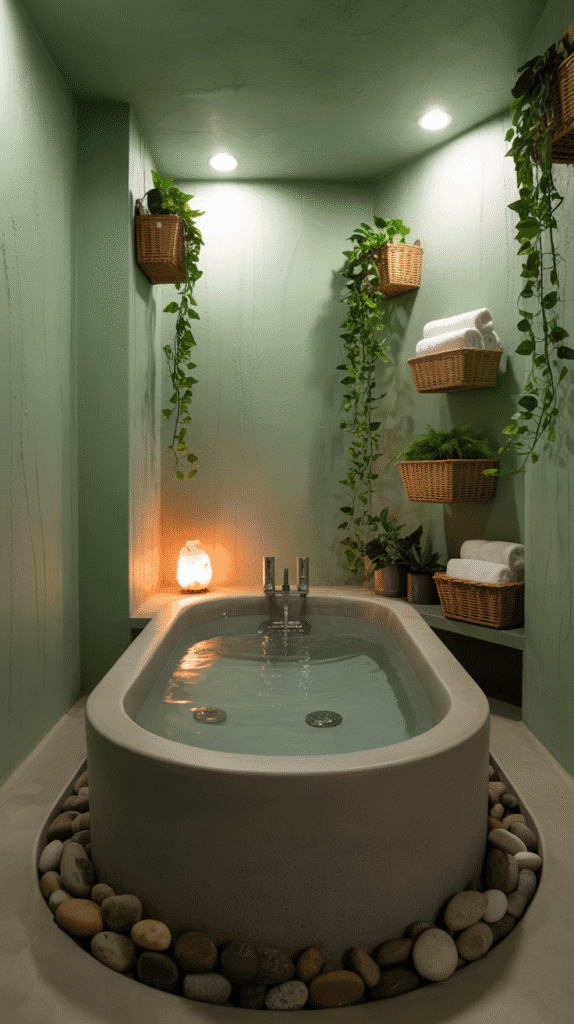
Now we’re talking about one of my absolute favorite basement colors. Sage green is like bringing the outdoors inside, which is exactly what your windowless basement needs. It’s earthy, calming, and sophisticated all at once.
I painted my home office area in the basement with a soft sage green, and the transformation was incredible. Suddenly, this underground space felt connected to nature instead of feeling like a bunker. The color works beautifully with both modern and traditional furniture styles, so you don’t have to worry about boxing yourself into a specific design direction.
The psychology behind this choice is pretty interesting too. Green naturally relaxes our minds and reduces stress – perfect for a basement that might already feel a bit confining. It’s like having a built-in mood booster on your walls.
Don’t go too bright with your green though. You want something muted and sophisticated, not “leprechaun’s cottage.” Think more “expensive spa” and less “children’s playroom.”
Mushroom Gray
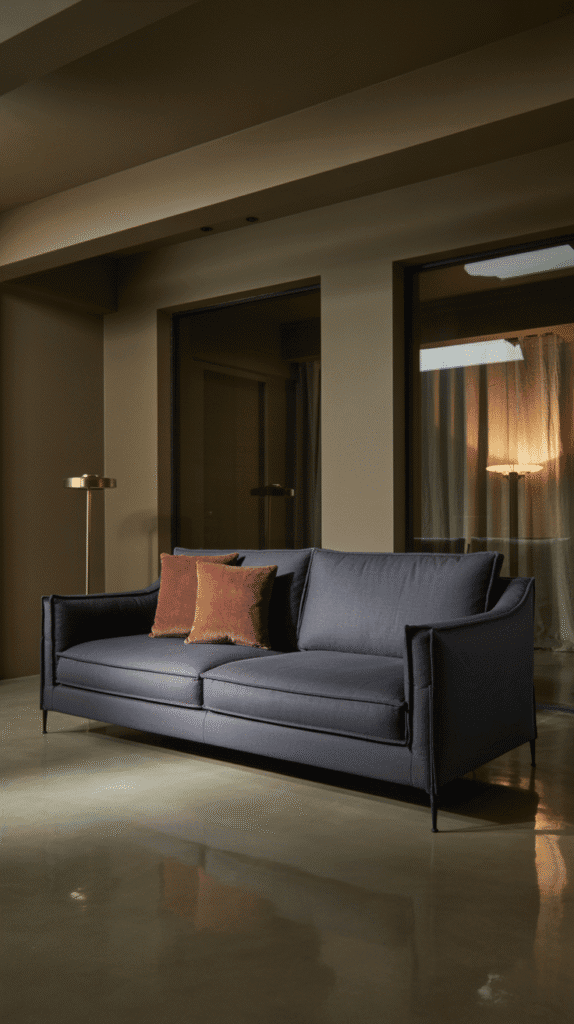
Okay, I know what you’re thinking – “Gray in a basement? Isn’t that going to make it feel even more depressing?” But hear me out. Mushroom gray is completely different from those cold, blue-toned grays that dominated every Pinterest board a few years ago.
This warm, sophisticated neutral has enough brown undertones to feel cozy while still being modern and versatile. I’ve seen mushroom gray work magic in basements because it’s dark enough to hide imperfections but light enough to keep the space from feeling like a cave.
The beauty of mushroom gray is its chameleon-like quality. In brighter artificial light, it looks almost taupe. In dimmer lighting, it deepens to a rich, cocoon-like shade. It’s basically the perfect basement color for people who want something more interesting than beige but less risky than bold colors.
Plus, let’s be real – it hides dust and cobwebs way better than white does. And in a basement, that’s not exactly a bad thing! 🙂
Terracotta or Clay Orange
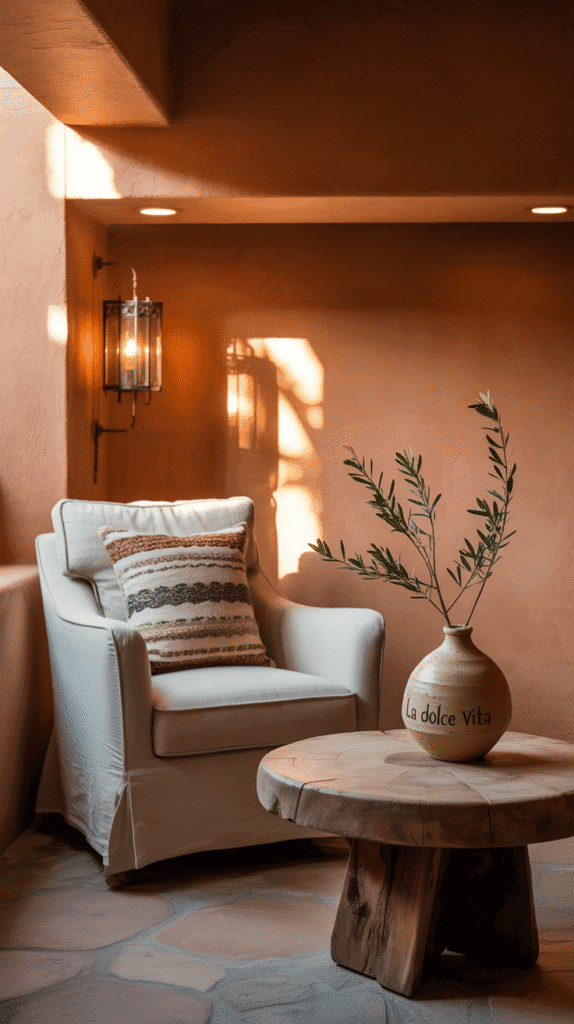
Before you scroll past this one thinking “orange in my basement? No way,” just give me a minute to change your mind. Terracotta and clay oranges are having a major moment, and for good reason. These earthy, sophisticated shades bring instant warmth to any space.
I was skeptical about this one too until I saw a friend’s basement entertainment room painted in a gorgeous clay orange. The space felt like a cozy Mediterranean villa instead of a suburban basement. The color made the room feel intimate and inviting – perfect for movie nights or game days.
The trick with terracotta is choosing the right undertones. You want something with brown and pink undertones rather than bright, traffic-cone orange. Think “sunset over the desert” rather than “construction worker vest.”
These warm oranges work especially well if your basement gets any natural light at all. The color seems to capture and amplify whatever light is available, making the space feel brighter and more alive.
Navy Blue Accent Wall
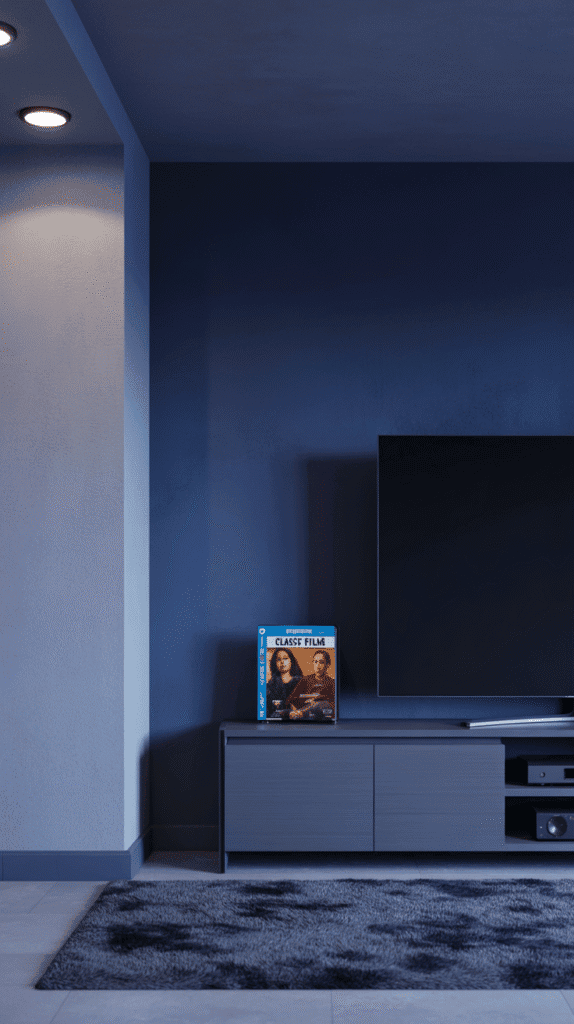
Sometimes you need to embrace the cozy cave vibe instead of fighting it. A navy blue accent wall can turn your basement into the ultimate retreat space. I’m talking about creating a sophisticated, moody atmosphere that feels intentional rather than accidental.
The key here is restraint – one accent wall, not the entire room. Choose the wall that’s most visible when you enter the space, or the one behind your main seating area. Navy blue creates incredible depth and drama without overwhelming a smaller space.
I’ve seen this work particularly well in basement home theaters and reading nooks. The dark blue creates this enveloping feeling that’s perfect for relaxation and entertainment. Pair it with warm white or cream on the other walls to keep the space from feeling too enclosed.
Fair warning though – navy blue will make your lighting even more important. You’ll need plenty of warm, layered lighting to keep the space from feeling like a dungeon. But when you get it right, it’s absolutely stunning.
Butter Yellow
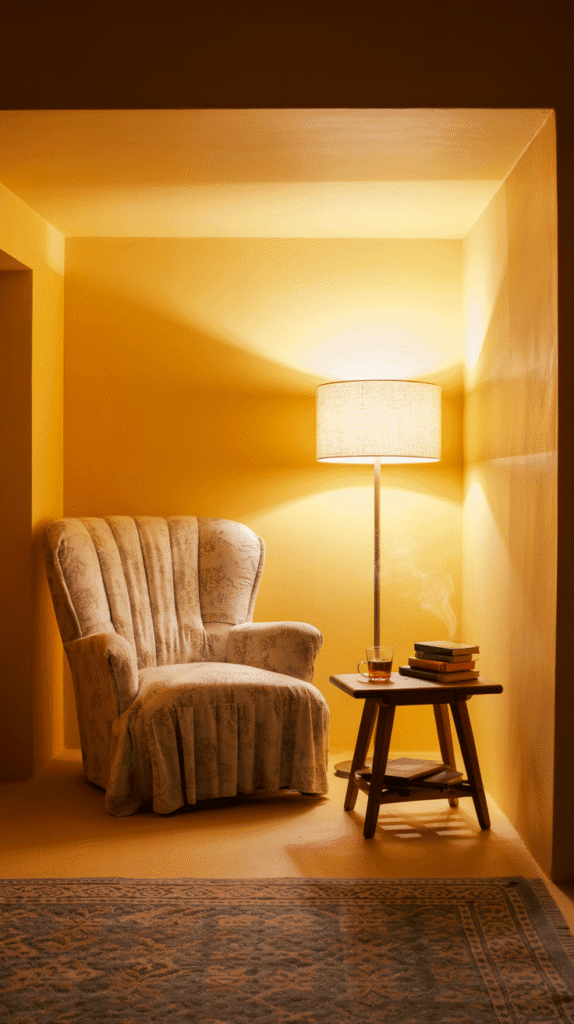
Now here’s a color that’ll make you smile every time you head downstairs. Butter yellow is like bottled sunshine, which is exactly what most basements desperately need. It’s warm, cheerful, and instantly brightening without being overwhelming.
I remember walking into a client’s basement after they’d painted it a soft butter yellow, and I literally stopped in my tracks. The space felt completely transformed – like someone had installed invisible windows. The yellow mimicked natural sunlight so well that you almost forgot you were underground.
The secret is choosing a muted, creamy yellow rather than something bright and bold. Think “morning sunlight streaming through curtains” rather than “school bus yellow.” The softer tones feel sophisticated and grown-up while still bringing that essential warmth.
This color works magic in multipurpose basements where you need the space to feel energizing during the day but still cozy at night. It’s like having a built-in mood booster that adapts to your lighting choices.
Dusty Rose or Mauve
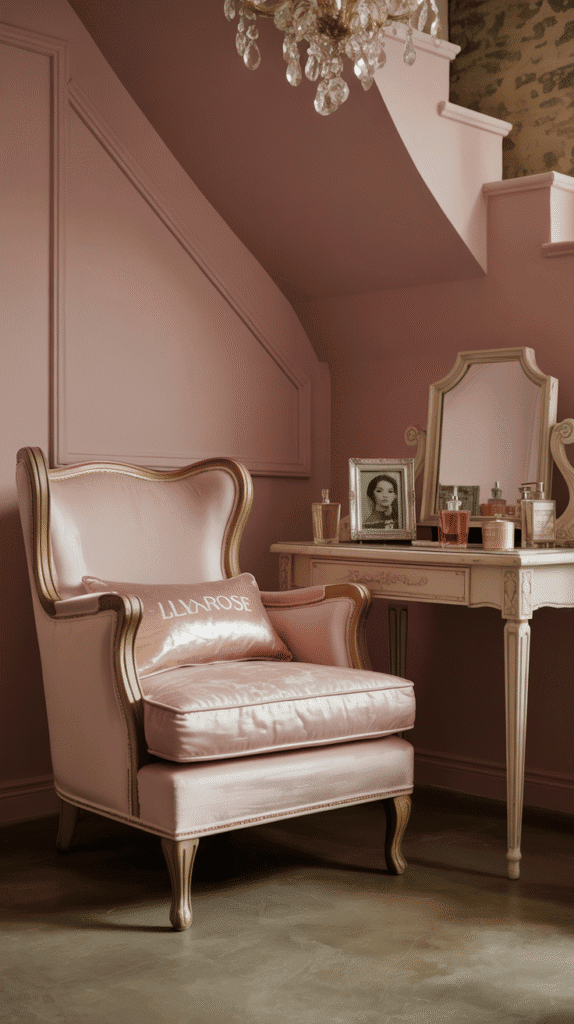
I know, I know – pink in the basement sounds crazy. But before you dismiss this idea, let me tell you about the most sophisticated basement I’ve ever seen. Dusty rose and mauve are having a serious design moment, and they’re way more versatile than you might think.
These muted pink tones bring warmth and softness to a space without feeling overly feminine or childish. They’re sophisticated enough for a home office, cozy enough for a reading nook, and interesting enough to make your basement feel like a destination rather than just “that room downstairs.”
The psychology of these colors is pretty amazing too. Pink tones are naturally calming and nurturing, which can counteract the sometimes stressful feeling of being in a confined space. Plus, they look absolutely gorgeous with both warm and cool lighting.
IMO, dusty rose is particularly stunning when paired with rich, dark wood tones or brass accents. It creates this vintage, romantic vibe that feels both timeless and completely current.
Forest Green
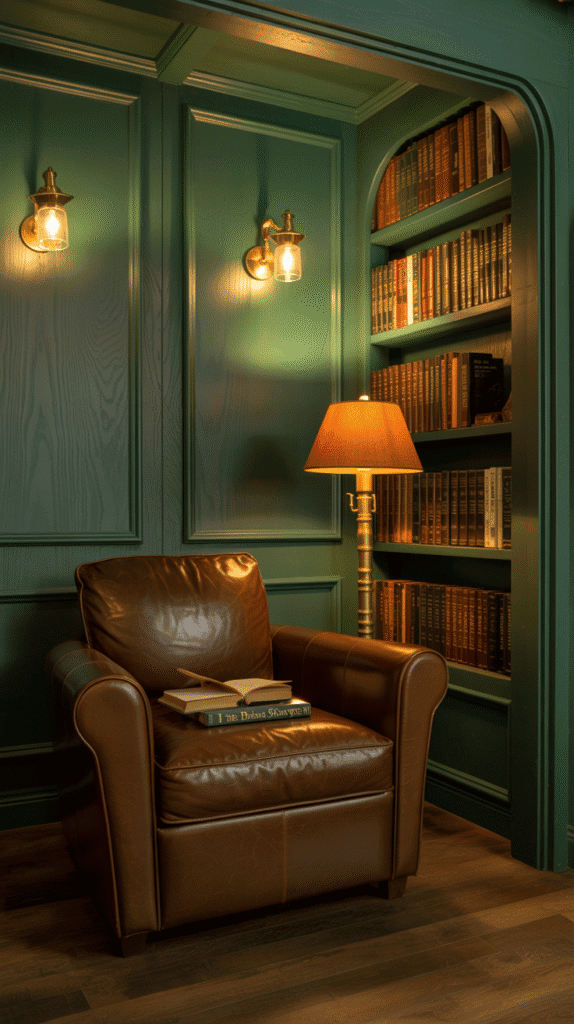
Want to create a basement that feels like a cozy English library or mountain cabin retreat? Forest green is your answer. This rich, deep color brings serious sophistication and creates an intimate, cocoon-like atmosphere that’s perfect for relaxation.
I painted my basement bar area in forest green, and it instantly became everyone’s favorite spot in the house. The color creates this enveloping feeling that makes people want to settle in with a good book or meaningful conversation. It’s like being wrapped in a warm blanket, but for your entire room.
Forest green works particularly well in basements because it embraces the cave-like quality instead of fighting it. You’re creating an intentional retreat space rather than trying to pretend you’re not underground. The color looks incredible with warm brass fixtures, rich wood tones, and leather furniture.
Pro tip: This color absolutely requires excellent lighting. Without proper illumination, forest green can feel oppressive rather than cozy. Layer in plenty of warm, ambient lighting to make the color glow.
Cream with Textured Finish
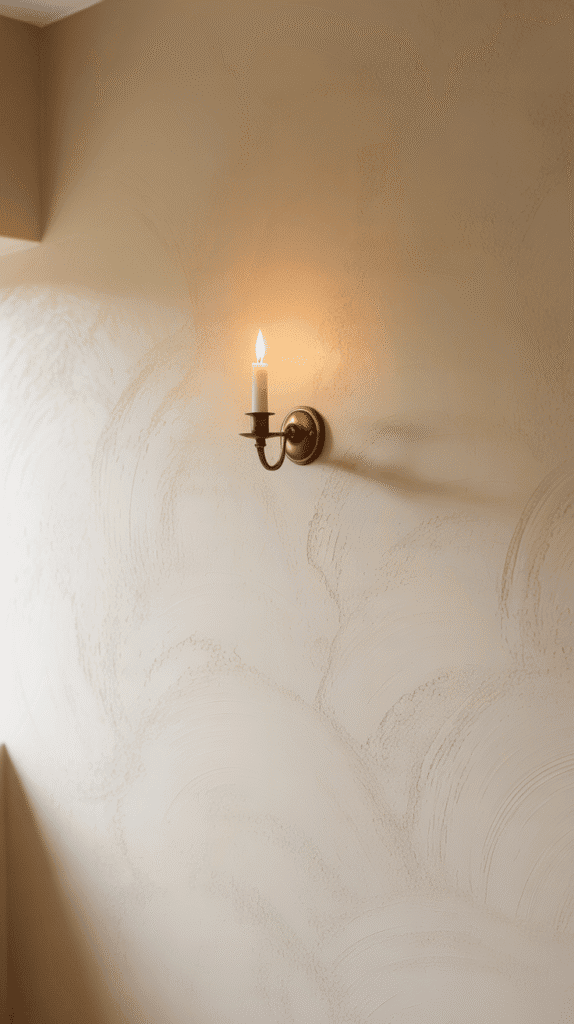
Sometimes the magic isn’t just in the color – it’s in the technique. Textured paint finishes can completely transform your basement walls, adding visual interest and hiding those inevitable imperfections that come with basement living.
I’m talking about techniques like sponging, rag rolling, or color washing. These methods create depth and movement on your walls that flat paint just can’t achieve. Cream is the perfect base color because it’s neutral enough to work with any decor but warm enough to feel welcoming.
The textured finish serves a practical purpose too – it helps camouflage those minor cracks, uneven surfaces, and other basement wall issues that would be glaringly obvious with flat paint. It’s like Instagram filters for your walls!
My favorite technique is color washing with two shades of cream. You start with a base coat, then layer on a slightly different shade using a sea sponge or soft cloth. The result is a subtle, organic texture that looks expensive and intentional.
Two-Tone Treatment
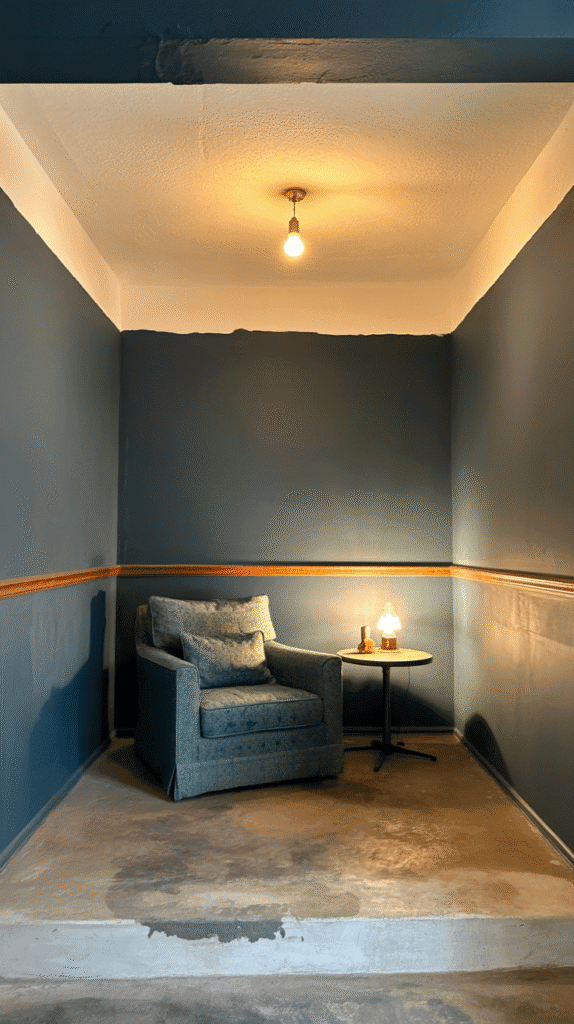
Here’s a designer trick that works absolute magic in basements with low ceilings: the two-tone treatment. Paint the bottom half of your walls in a darker color and the top half in a lighter shade. It’s like optical illusion 101 for interior design.
I used this technique in a basement with 7-foot ceilings, and it made the space feel at least a foot taller. The darker bottom anchors the room while the lighter top draws your eye upward, creating the illusion of height. Plus, the darker bottom half hides scuffs and wear better than light colors would.
The key is choosing colors that work harmoniously together. Think cream on top with mushroom gray on the bottom, or soft white above with sage green below. You want enough contrast to create the visual separation but not so much that it looks jarring.
Don’t forget the chair rail or border between the two colors. It creates a finished, intentional look rather than appearing like you just randomly decided to change colors halfway up the wall.
Chocolate Brown
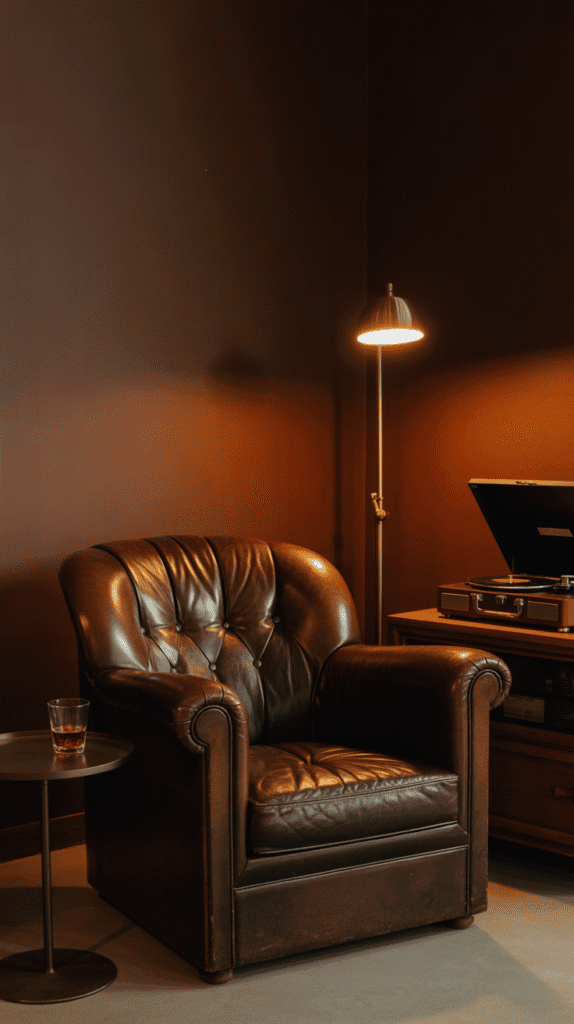
Ready to create the coziest basement retreat ever? Chocolate brown is like a warm hug for your walls. This rich, enveloping color turns any basement into an intimate, sophisticated space that feels more like an upscale lounge than a utilitarian room.
I’ve seen chocolate brown work beautifully in basement media rooms and home bars. The color creates this cocoon-like feeling that’s perfect for relaxation and entertainment. It makes the space feel intentionally cozy rather than accidentally cramped.
The secret to making chocolate brown work is layering in plenty of warm lighting. Think table lamps, floor lamps, and maybe some LED strip lighting behind furniture. The brown absorbs light, so you need multiple light sources to keep the space from feeling cave-like in a bad way.
Pair chocolate brown with cream or warm white trim to create contrast and prevent the space from feeling too heavy. Add in some metallic accents – brass or copper work beautifully – and you’ve got yourself a seriously sophisticated basement retreat.
Lavender Gray
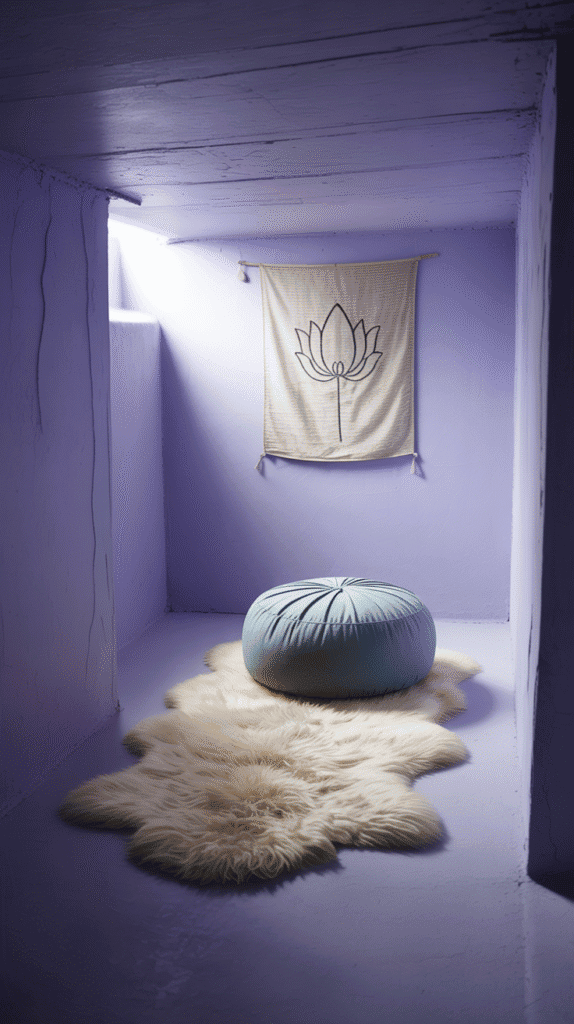
Looking for something unexpected but still sophisticated? Lavender gray is that perfect “I can’t quite put my finger on what color this is” shade that keeps people intrigued. It’s calming, modern, and just unusual enough to make your basement feel special.
This color works particularly well in basement bedrooms or meditation spaces. The subtle purple undertones are naturally relaxing, making it easier to unwind and destress. It’s like having aromatherapy built into your wall color.
I love how lavender gray changes throughout the day depending on your lighting. In bright light, it reads more gray. In softer lighting, the purple undertones become more apparent. It’s like having a color-changing room without any fancy technology.
The best part about lavender gray is how well it plays with both warm and cool accent colors. Pair it with warm golds and creams for a cozy vibe, or go with crisp whites and silvers for something more contemporary.
Warm Beige with Color-Washed Technique
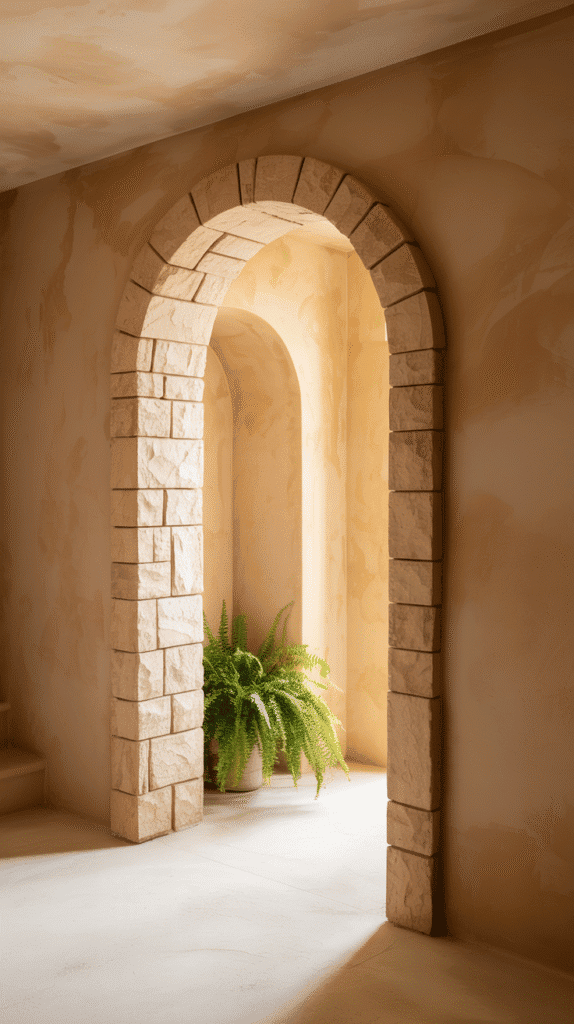
Beige gets a bad rap, but hear me out – when you add texture through color-washing techniques, beige becomes absolutely stunning. I’m talking about layering different shades of beige to create depth and visual interest that mimics natural stone or aged plaster.
The color-washing technique involves applying a base coat, then using a damp sponge or cloth to layer on slightly different tones. The result is an organic, sophisticated texture that looks like it costs way more than it actually does. Plus, it’s way more forgiving than flat paint if you make mistakes.
This technique is perfect for basement walls that aren’t perfectly smooth. Instead of highlighting imperfections, the varied tones and textures actually disguise them. It’s like giving your basement walls a professional makeup job.
Start with a medium beige base, then layer in slightly lighter and darker tones. The key is blending while the paint is still wet to create those soft, natural-looking variations.
Burnt Sienna Red

Want to create a basement that feels like a cozy wine cellar or intimate restaurant? Burnt sienna red brings incredible warmth and richness to any space. This isn’t bright fire-engine red – it’s a deep, earthy red with brown undertones that feels sophisticated and inviting.
I’ve seen this color work magic in basement entertainment areas and home bars. The rich red creates an intimate, upscale atmosphere that makes people want to linger and enjoy themselves. It’s the kind of color that makes ordinary basement gatherings feel like special occasions.
The key to making burnt sienna work is balancing it with lighter elements. Use cream or warm white trim, and make sure you have plenty of warm lighting to keep the space from feeling too dark. The color looks incredible with brass fixtures and rich wood tones.
Fair warning – this is a bold choice that requires commitment. But if you’re ready to create a truly unique basement space, burnt sienna red delivers drama and sophistication in spades.
Soft Mint Green
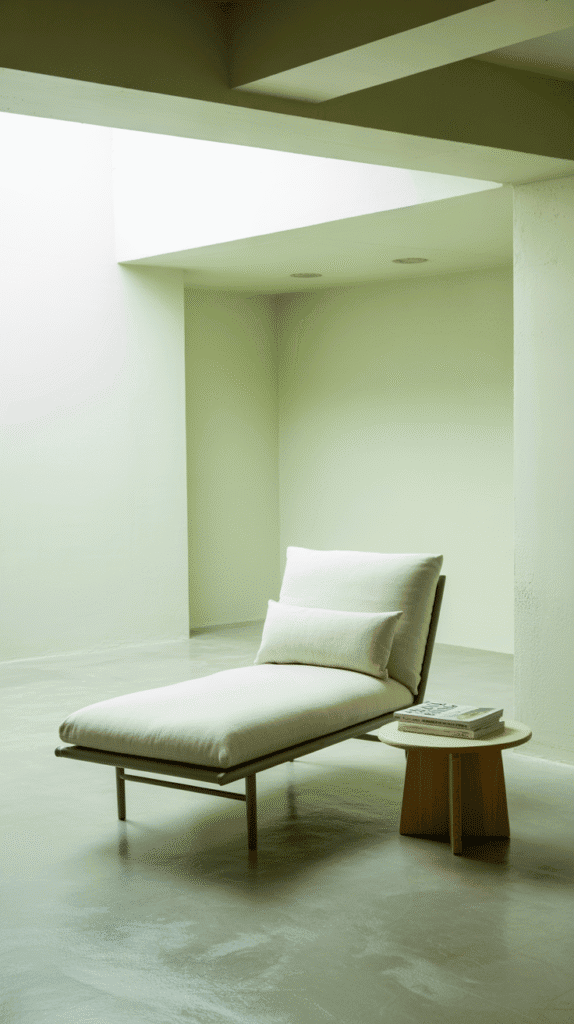
Sometimes you want color that feels fresh and clean without being stark or cold. Soft mint green hits that sweet spot perfectly – it’s colorful enough to feel intentional but light enough to keep your basement feeling bright and airy.
This color works beautifully in basement guest rooms, craft spaces, or home offices. Mint green has this naturally refreshing quality that makes spaces feel clean and energizing. It’s like having a breath of fresh air built into your wall color.
I love how mint green pairs with both warm and cool accent colors. Add warm wood tones and brass fixtures for a vintage vibe, or go with crisp whites and chrome for something more contemporary. The color is surprisingly versatile.
The soft, muted version of mint is key here. You want something that whispers rather than shouts – think “spa retreat” rather than “mint chocolate chip ice cream.”
Charcoal Gray with Metallic Accents
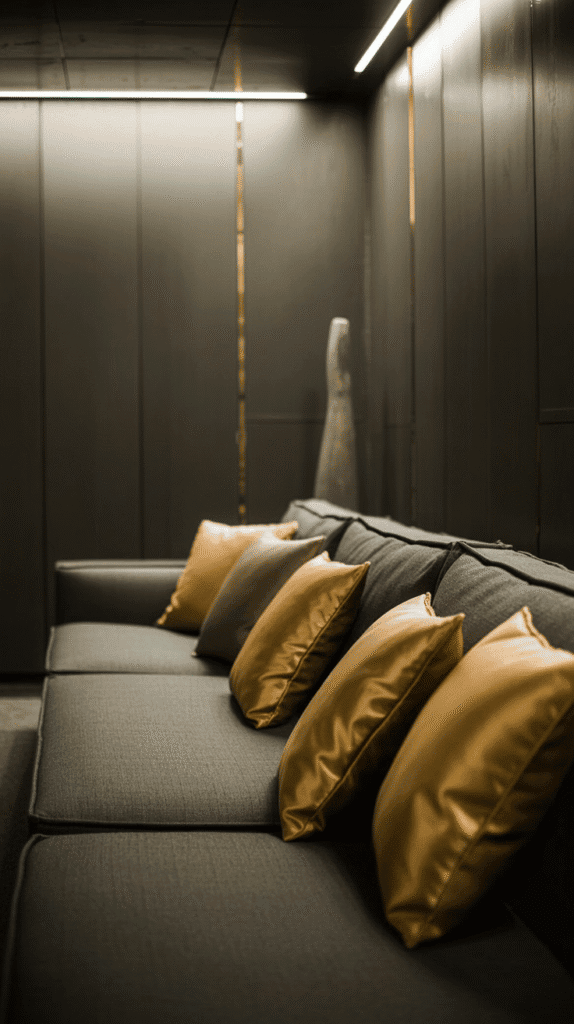
Ready to create a basement that feels like a high-end urban loft? Charcoal gray with metallic accent details is pure sophistication. This isn’t your average gray paint job – I’m talking about adding strategic metallic touches that make the space feel glamorous and intentional.
The charcoal provides a dramatic backdrop that makes everything else in the room pop. Add metallic paint details through stenciling, geometric patterns, or accent stripes, and suddenly your basement feels like it belongs in a design magazine.
Metallic accents are brilliant in basements because they reflect whatever light is available, helping to brighten the space. Think gold or copper geometric patterns, silver accent stripes, or even metallic paint details around windows and doors.
This approach works particularly well in modern or industrial-style basements. The charcoal and metallic combination feels urban and sophisticated – like you intentionally chose to live in a chic underground space.
Ombre or Gradient Effect
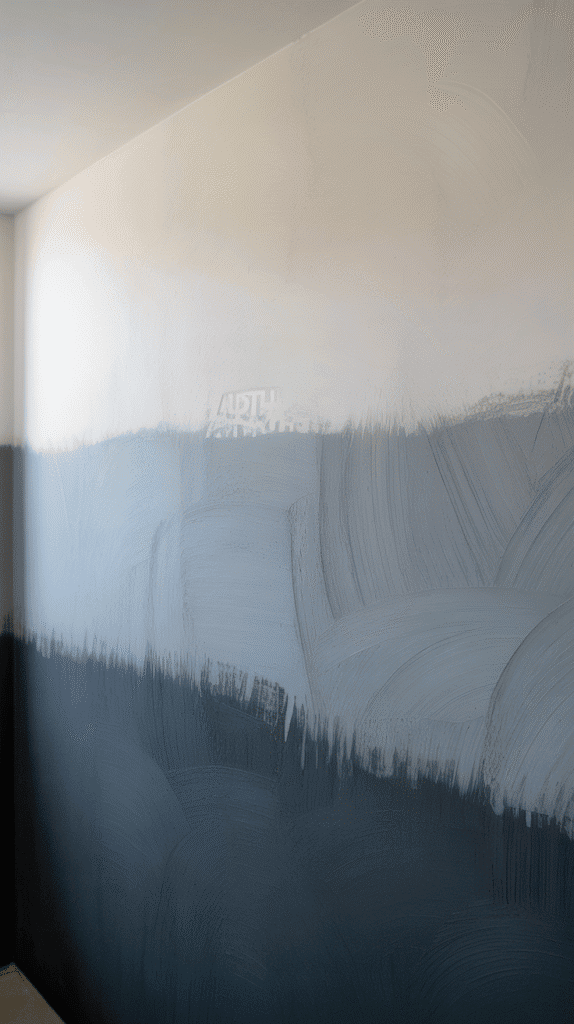
Want to create something truly unique in your basement? The ombre or gradient effect is like artwork on your walls. You gradually transition from light to dark (or vice versa) across your wall surface, creating movement and visual interest that’s absolutely stunning.
I’ve seen this technique used to create the illusion of height in low-ceiling basements by starting dark at the bottom and gradually lightening toward the top. The eye naturally follows the gradient upward, making the ceiling seem higher than it actually is.
The technique requires some patience and blending skill, but the results are worth it. You can go subtle with different shades of the same color family, or create more drama with complementary colors. Think sunset gradients or ocean-to-sky transitions.
Pro tip: This works best on accent walls rather than entire rooms. Choose your most prominent wall and make it the star of the show while keeping other walls in coordinating solid colors.
Making Your Basement Paint Choice Work
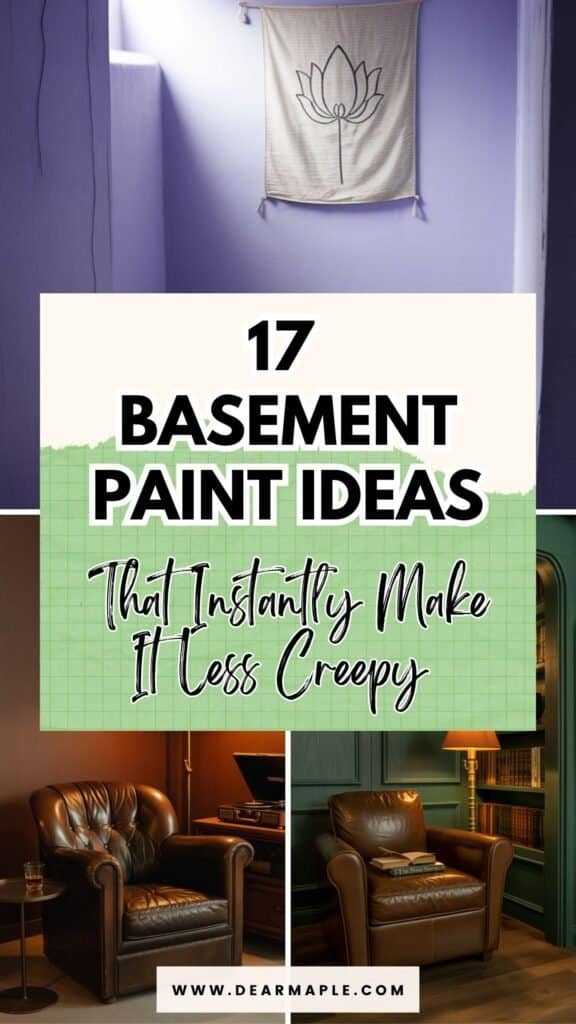
So there you have it – 17 ways to transform your basement from scary dungeon to cozy retreat. But here’s the thing: the best paint color is the one that makes YOU feel good when you walk into the space.
Consider how you actually plan to use your basement. Creating a home theater? Those darker, cozy colors like chocolate brown or forest green might be perfect. Need a bright workspace? Butter yellow or soft mint could be your answer. The function should influence your color choice.
Don’t forget to test your colors in the actual space before committing. Basement lighting is tricky, and colors can look completely different down there compared to your main floor. Live with sample patches for at least a week – trust me on this one!
Your basement doesn’t have to be the forgotten room in your house anymore. With the right paint color and a little creativity, it can become your favorite retreat space. Now stop making excuses and go pick up that paint brush – your cozy basement transformation awaits! 🙂

